12 Of The Most Extravagant Royal Palaces Around The World

Throughout history, monarchs have built magnificent palaces as symbols of their power and wealth. These architectural marvels showcase incredible craftsmanship, priceless treasures, and centuries of royal history.
From Asia to Europe, these palatial residences continue to amaze visitors with their sheer scale and opulence.
1. Palace of Versailles: The Ultimate Royal Showpiece
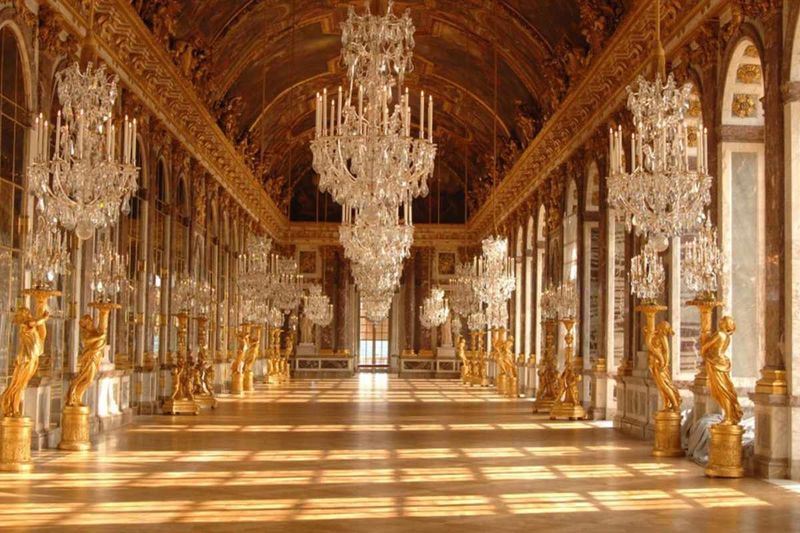
Have you ever wondered what unlimited royal budget looks like? King Louis XIV’s 17th-century masterpiece outside Paris answers that question with 700 rooms, 67 staircases, and gardens stretching nearly 2,000 acres.
Gold leaf covers practically everything inside, while the famous Hall of Mirrors dazzles with 357 mirrors reflecting light from 17 arched windows. The palace housed 10,000 residents during its heyday!
Originally a hunting lodge, Louis transformed it into Europe’s most copied palace, establishing a blueprint for royal excess that continues to draw over 7 million visitors annually.
2. Forbidden City: China’s Imperial Fortress
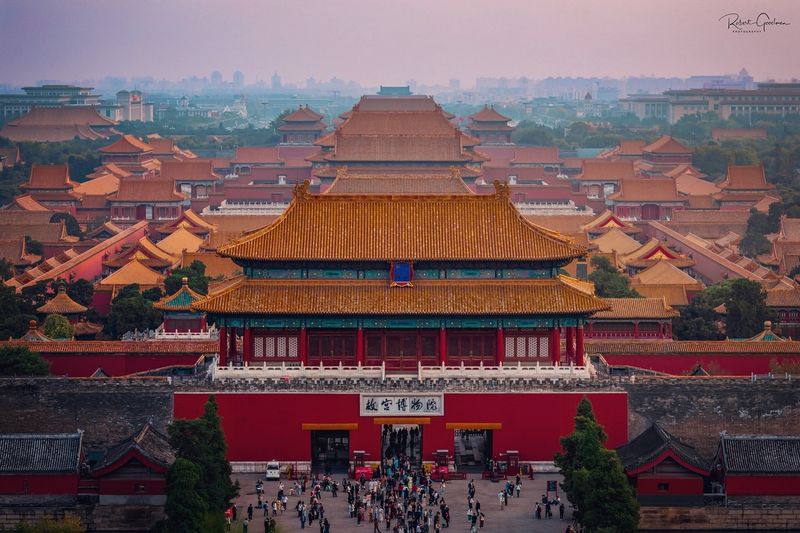
Behind massive red walls in Beijing lies the world’s largest palace complex – a mind-boggling collection of 980 buildings with 8,707 rooms spread across 180 acres. For nearly 500 years, 24 emperors ruled China from this mysterious compound.
Common citizens couldn’t enter without permission (hence the name “Forbidden”). Today, millions explore its yellow-tiled roofs, marble bridges, and dragon motifs representing imperial power.
A fascinating blend of function and feng shui guided its design, with northern sections built higher to symbolize authority over southern areas where subjects were received.
3. Winter Palace: Russia’s Turquoise Dream
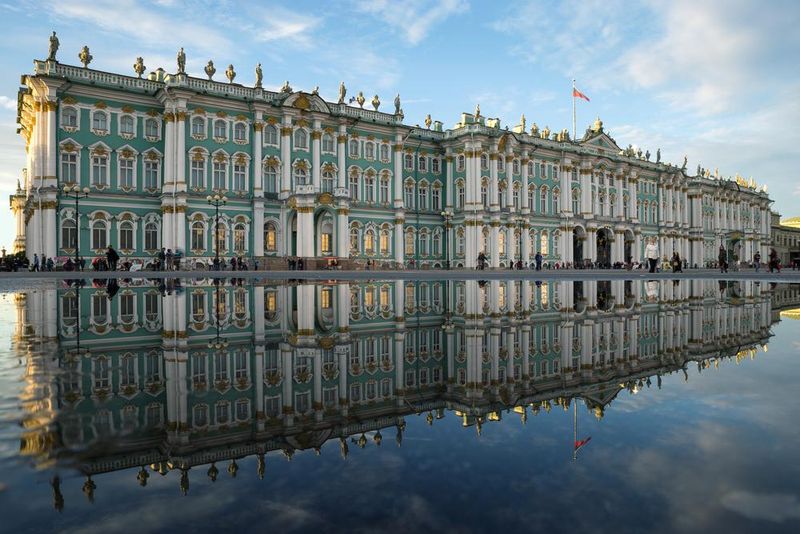
Along St. Petersburg’s Neva River stands a mint-green marvel that housed Russian rulers for 185 winters. Its distinctive color makes it instantly recognizable among the city’s grand buildings.
Inside waits a treasure trove of riches – 1,500 rooms, 1,945 windows, 1,786 doors, and 117 staircases. The palace forms part of the Hermitage Museum, displaying over three million artifacts including Fabergé eggs and priceless artworks.
During the 1917 Russian Revolution, this symbol of imperial excess became a target. Revolutionary forces stormed its halls, ending three centuries of Romanov rule in a single dramatic night.
4. Topkapi Palace: Where East Meets West
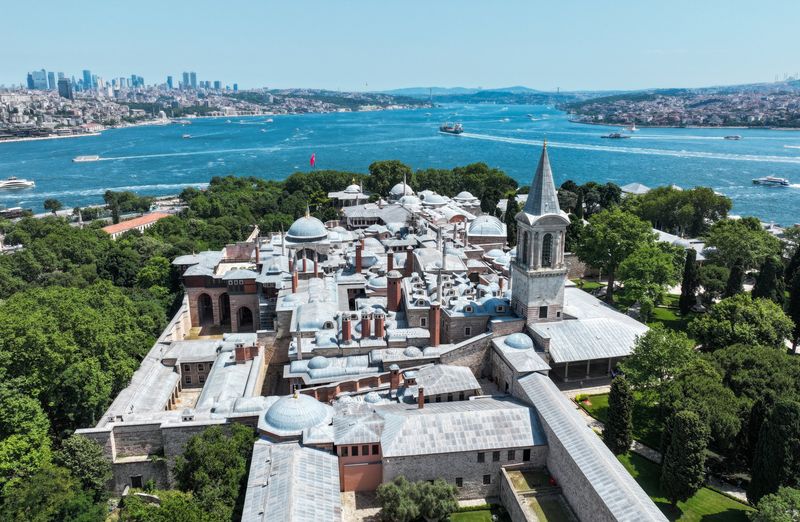
Perched on Istanbul’s promontory overlooking two continents, this sprawling Ottoman complex served as the heart of an empire for nearly 400 years. Unlike European palaces built as single structures, Topkapi unfolds as a series of pavilions and courtyards.
The Harem quarters – where the sultan’s wives, concubines, and children lived under the watchful eyes of eunuch guards – remain its most intriguing section. Visitors marvel at the treasury containing the 86-carat Spoonmaker’s Diamond.
Each sultan added his own touch, creating an architectural timeline of Ottoman taste from the 15th to 19th centuries.
5. Schönbrunn Palace: Vienna’s Yellow Gem
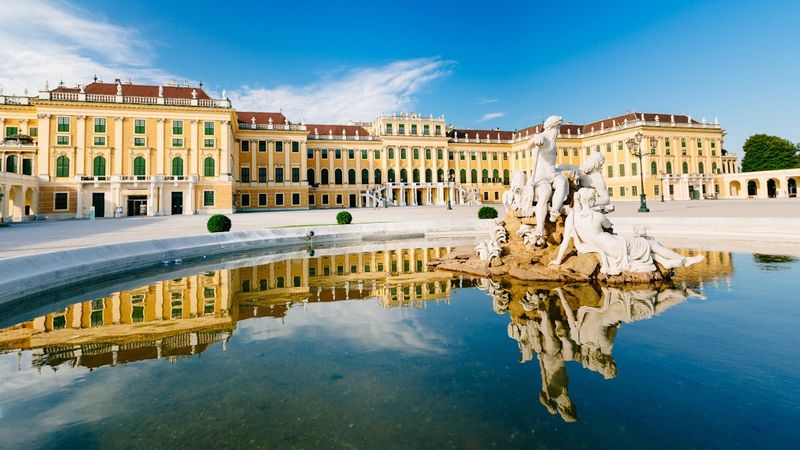
Mozart performed his first concert here at age six! This sunshine-yellow Baroque masterpiece served as the Habsburg summer residence, though with 1,441 rooms, it’s hardly a simple vacation home.
The palace gardens feature the world’s oldest zoo still in operation, dating back to 1752. Empress Maria Theresa transformed what began as a hunting lodge into a rival to Versailles, determined to demonstrate Habsburg power through architecture.
Many pivotal historical moments occurred within these walls, including the signing of treaties and the final days of six-year-old Napoleon II, who died in the bedroom where his father had once slept as conqueror.
6. Grand Palace: Bangkok’s Spiritual Crown Jewel

What happens when you combine royal residence, temple complex, and administrative center? Bangkok’s dazzling Grand Palace answers with a riot of gold spires, colorful tiles, and mythical guardian statues across its 54-acre grounds.
Unlike European counterparts, this complex houses Thailand’s most sacred Buddha image – the Emerald Buddha (actually carved from jade). Gold leaf covers surfaces everywhere, creating a shimmering effect under the tropical sun.
Though kings no longer live here, royal ceremonies still take place in its halls, maintaining traditions dating back to 1782 when Bangkok became Thailand’s capital.
7. Alhambra: Spain’s Moorish Masterpiece
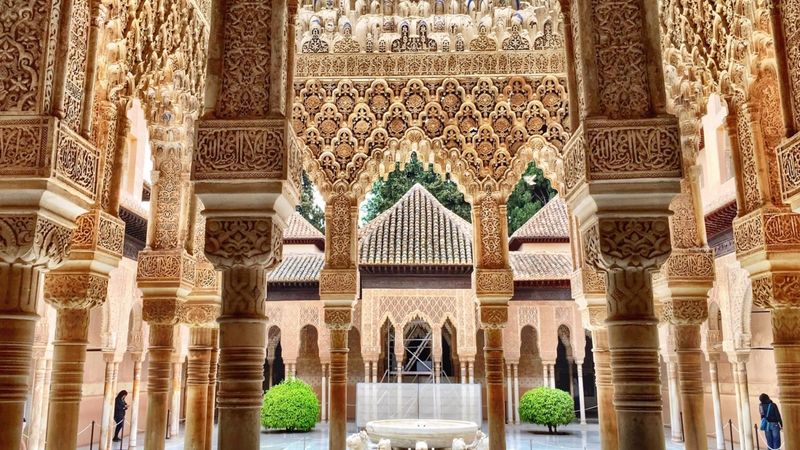
Imagine Islamic calligraphy turned into architecture! Perched on a hillside overlooking Granada, this red-hued fortress-palace complex represents the pinnacle of Moorish design in Europe.
Water features prominently throughout – reflecting pools mirror intricate stucco walls while fountains create cooling microclimates in courtyards. The name “Alhambra” derives from Arabic meaning “red castle,” referring to its sun-baked clay walls that glow crimson at sunset.
After the 1492 Christian reconquest of Spain, Ferdinand and Isabella made significant additions, creating a fascinating blend of Islamic and Renaissance styles that tells the story of Spain’s complex cultural history.
8. Potala Palace: Tibet’s Mountain Sanctuary
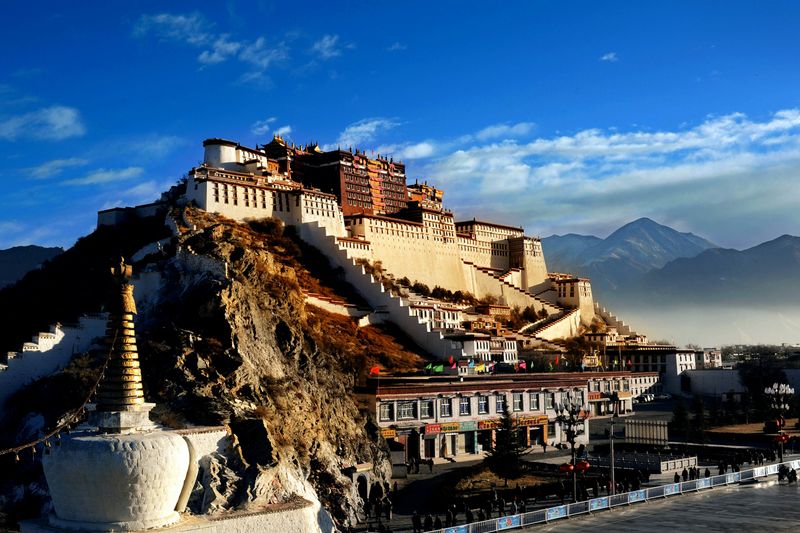
Rising 13 stories from a 12,000-foot-high mountaintop, this breathtaking structure served as both the Dalai Lama’s winter residence and Tibet’s political center until 1959. Its imposing white and red walls stretch over 1,300 feet across the face of Red Mountain.
More than 1,000 rooms contain chapels, libraries with ancient Buddhist texts, and tombs of previous Dalai Lamas. Some burial stupas contain over 8,000 pounds of gold!
The palace’s construction began in 1645, with workers carrying building materials up steep slopes without modern equipment – an engineering feat that remains impressive even by today’s standards.
9. Windsor Castle: Britain’s Medieval Fortress-Turned-Palace
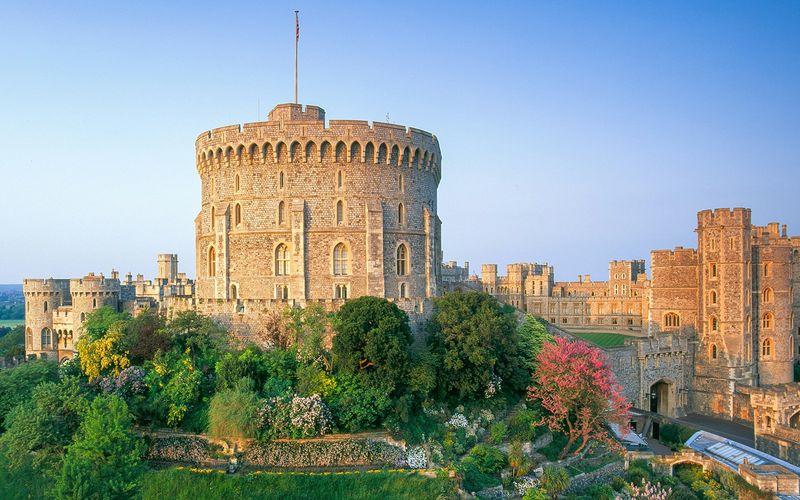
For nearly 1,000 years, this iconic castle has dominated the Thames Valley landscape. Queen Elizabeth II considered it home, using the phrase “Windsor is where one lives” to distinguish it from Buckingham Palace, which she saw primarily as an office.
After surviving centuries of wars, Windsor faced disaster in 1992 when fire destroyed 115 rooms. The painstaking restoration cost £37 million ($67 million) and took five years to complete.
St. George’s Chapel within the castle grounds houses the tombs of ten sovereigns including Henry VIII and serves as the spiritual home of the Order of the Garter, Britain’s highest order of chivalry.
10. Peterhof Palace: Russia’s Fountain Paradise
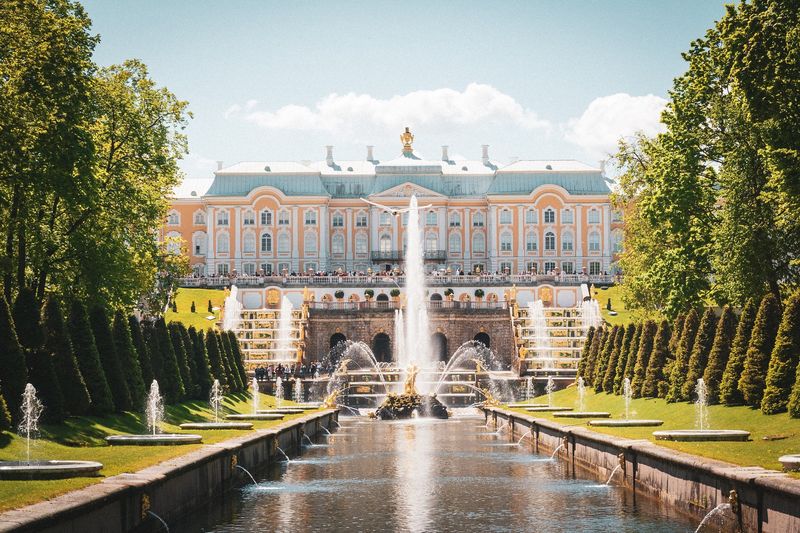
Could a palace outshine Versailles? Peter the Great thought so when designing this seaside marvel near St. Petersburg, featuring 64 fountains, 255 sculptures, and cascading golden waterworks that operate without pumps!
The Grand Cascade’s central fountain shoots water 65 feet high through a statue of Samson wrestling a lion. Most impressive of all – the entire fountain system works by natural water pressure, using elevation differences and gravity.
During World War II, Nazi forces occupied and severely damaged the palace. Dedicated museum workers had buried many fountains and sculptures beforehand, allowing for the painstaking postwar restoration visitors enjoy today.
11. Imperial Palace: Japan’s Hidden Heart
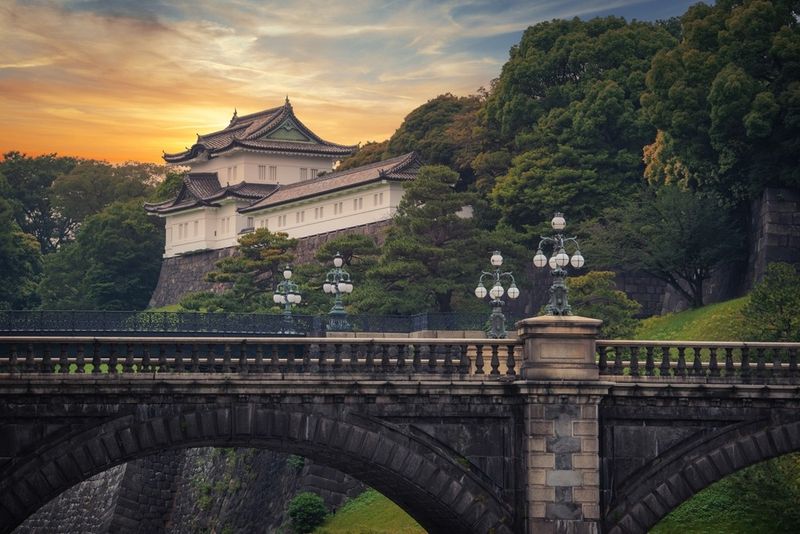
Right in bustling Tokyo sits a peaceful 3.5-square-kilometer green oasis surrounded by moats and massive stone walls. Unlike other royal residences, much of Japan’s Imperial Palace remains closed to the public, maintaining its mystery.
Twice yearly, on the Emperor’s birthday and New Year, gates open for rare public appearances where thousands gather to wave tiny flags. The palace occupies the site of ancient Edo Castle, though most structures date from after WWII when bombings destroyed the originals.
Beneath modern buildings lie the foundations of shogun-era fortifications, representing Japan’s transition from feudal to modern imperial power.
12. Mysore Palace: India’s Electrifying Wonder
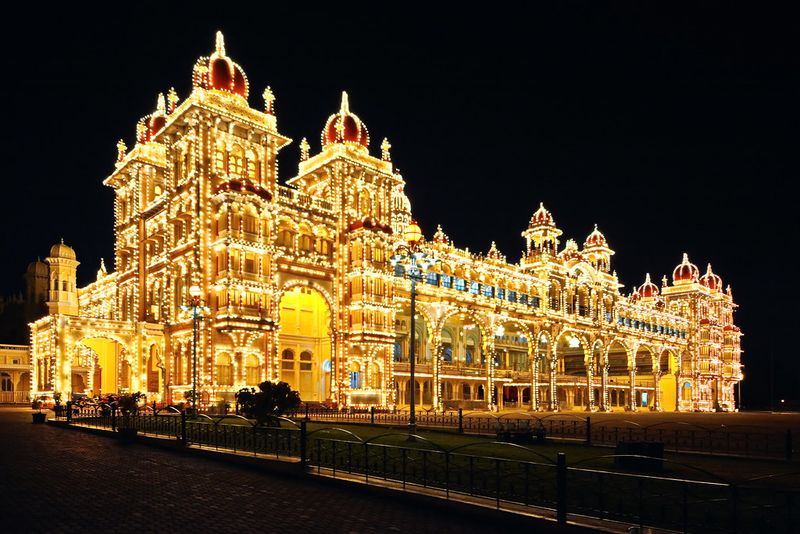
When 97,000 light bulbs illuminate this Indo-Saracenic marvel on special occasions, the result stops traffic across Mysore city. Built between 1897-1912 after fire destroyed the previous wooden structure, this relatively modern palace combines Hindu, Muslim, Rajput, and Gothic styles.
The maharaja’s throne – made of solid gold weighing 200 kg – sits atop a platform supported by steps with silver elephants. Visitors must remove shoes before entering rooms with intricate ivory inlaid doors, stained glass ceilings, and mirror-lined ceremonial halls.
As one of India’s most visited attractions after the Taj Mahal, it exemplifies the wealth of India’s princely states before independence.
